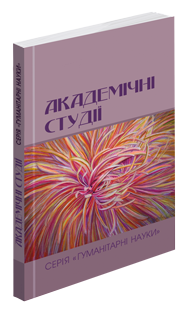Abstract
The article examines the integration of natural language processing (NLP) and cartographic visualization for analyzing the emotional dimension of war testimonies. The material includes 1437 texts collected within the project “Narratives of War: Virtual Exhibit of Written Testimonies of the Russia-Ukraine War” (2022–2023). Testimonies were processed and classified using the EmoBench-UA model, a multi-label classifier adapted for Ukrainian. Based on a multilingual transformer encoder, the model identifies six basic emotions: Joy, Fear, Anger, Sadness, Disgust, Surprise, and a neutral category (None). Its multi-label approach captures the coexistence of several emotions in one text, reflecting the multidimensionality of human experience. The analysis revealed the predominance of Sadness and Fear, which together form over sixty percent of emotional markers. This corresponds to the traumatic nature of war, linked to loss, uncertainty, and existential threat. Sadness often exceeded 40–50%, while Fear ranged from 20–40% and in some regions surpassed 60%. Neutral narration (None), averaging 20–30%, points to descriptive testimonies without explicit emotions. Other emotions were rarer: Joy appeared in contexts of solidarity and hope, Anger and Disgust reflected reactions to aggression, while Surprise occurred sporadically. Cartographic visualization enabled the identification of regional patterns. Compared to charts, maps provided a more intuitive overview of Ukraine’s emotional landscape, clearly showing dominant emotions by region. The study highlights both potential and limitations. The uneven regional distribution of testimonies affects representativeness, pointing to the need for corpus expansion and integration of temporal and socio-demographic data for deeper insights and analysis.
References
Anderson C. Quantifying Emotion: Survey Methods and Sentiment Analysis in Cartographic Design Research. Abstracts of the ICA. 2019. No. 1. P. 1–2. URL: https://doi.org/10.5194/ica-abs-1-8-2019 (date of access: 18.08.2025).
Dementieva, D., Fraser, A., Babakov N. EmoBench-UA: A Benchmark Dataset for Emotion Detection in Ukrainian. 2025. 23 p. (Preprint. 2505.23297). URL: https://doi.org/10.48550/arXiv.2505.23297 (date of access: 18.08.2025).
Girnth H. Mapping language data. Language and Space: Language Mapping : an International Handbook of Linguistic Variation. Göttingen, 2010. P. 98–118.
Goodchild M. F. Mapping Language in the Age of GIS. Handbook of the Changing World Language Map. Cham, 2020. Vol. 6. P. 3673–3682.
Marković N. How to read ʽEmotional Cartographiesʼ: Rethinking (Carto)graphic Representation and Semantics. Abstracts of the ICA. 2019. No. 1. P. 1–2. URL: https://doi.org/10.5194/ica-abs-1-239-2019 (дата звернення: 18.08.2025).
Narratives of War: Virtual Exhibit of Written Testimonies of the Russia-Ukraine War. Narratives of War. URL: https://now.omeka.net/ (date of access: 24.08.2025).
The Geography of ‘Fear’, ‘Sadness’, ‘Anger’ and ‘Joy’: Exploring the Emotional Landscapes in the Holocaust Survivors’ Testimonies / I. Ezeani et al. CEUR Workshop Proceedings. 2024. No. 3671. P. 93–103. URL: https://ceur-ws.org/Vol-3671/paper8.pdf (date of access: 17.08.2025).
The narratives of war (NoW) corpus of written testimonies of the Russia-Ukraine war / S. Zasiekin et al. Lang Resources & Evaluation. 2025. No. 59. P. 2415–2426. URL: https://doi.org/10.1007/s10579-025-09813-8 (date of access: 18.08.2025).

This work is licensed under a Creative Commons Attribution 4.0 International License.

